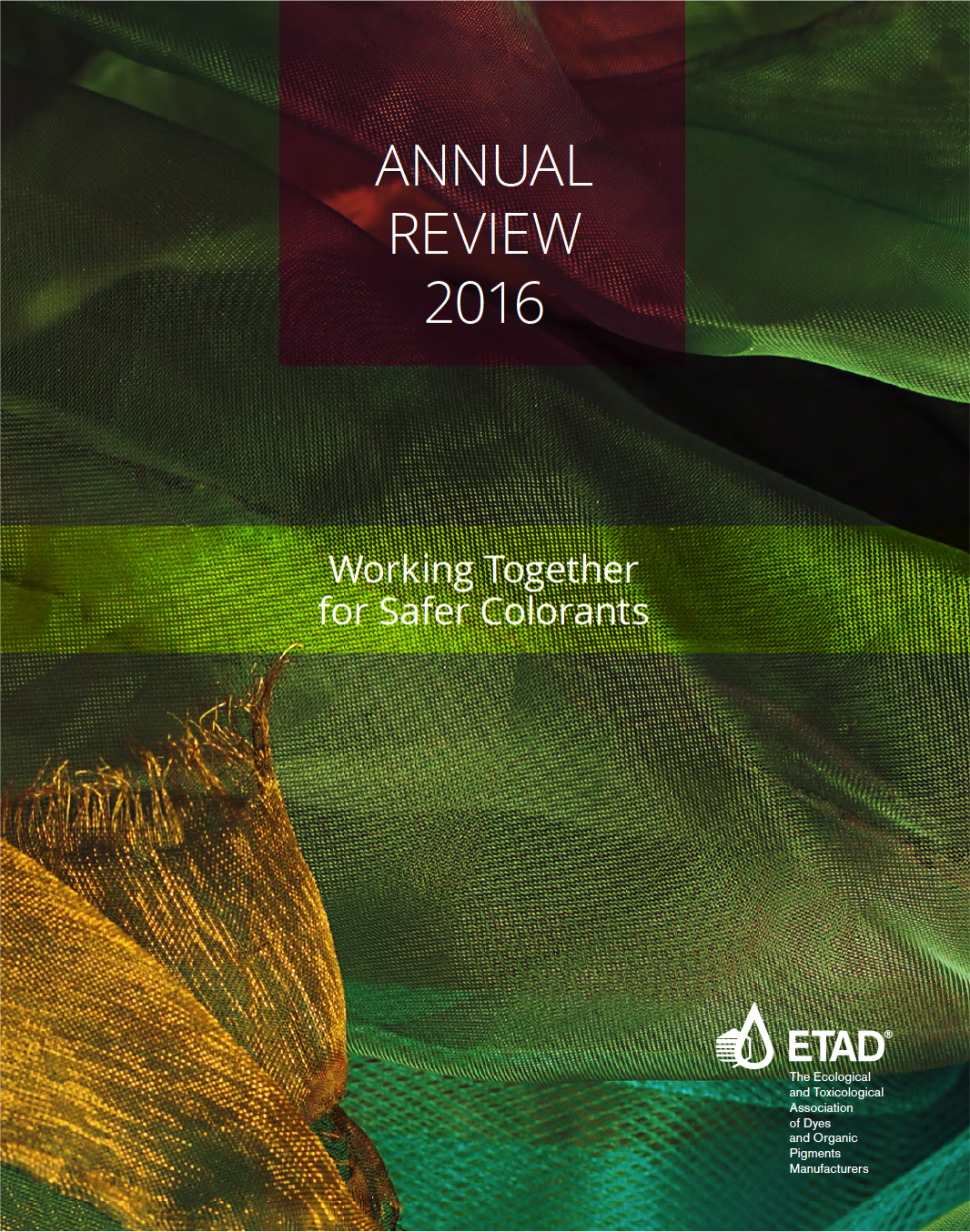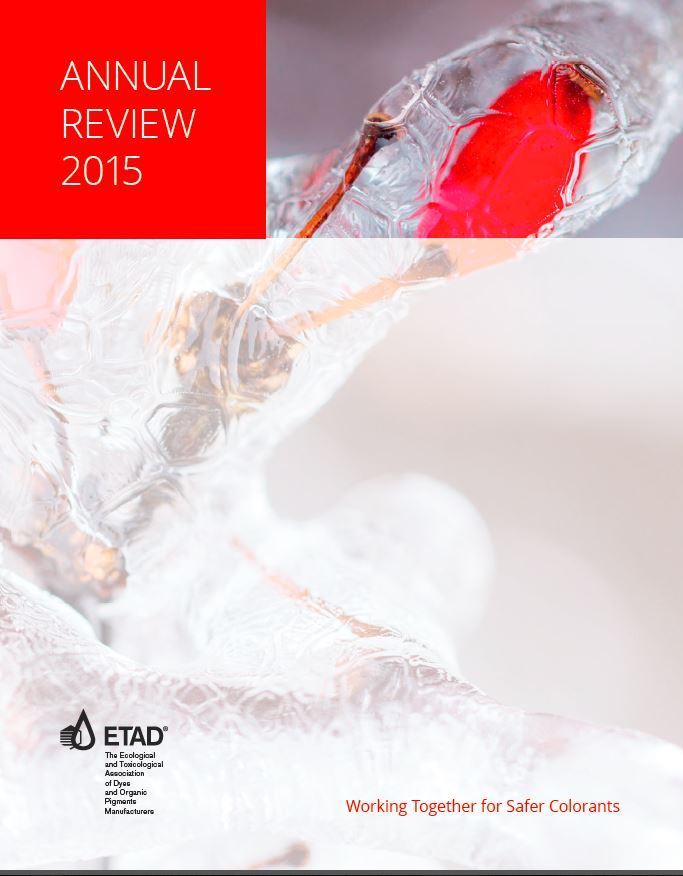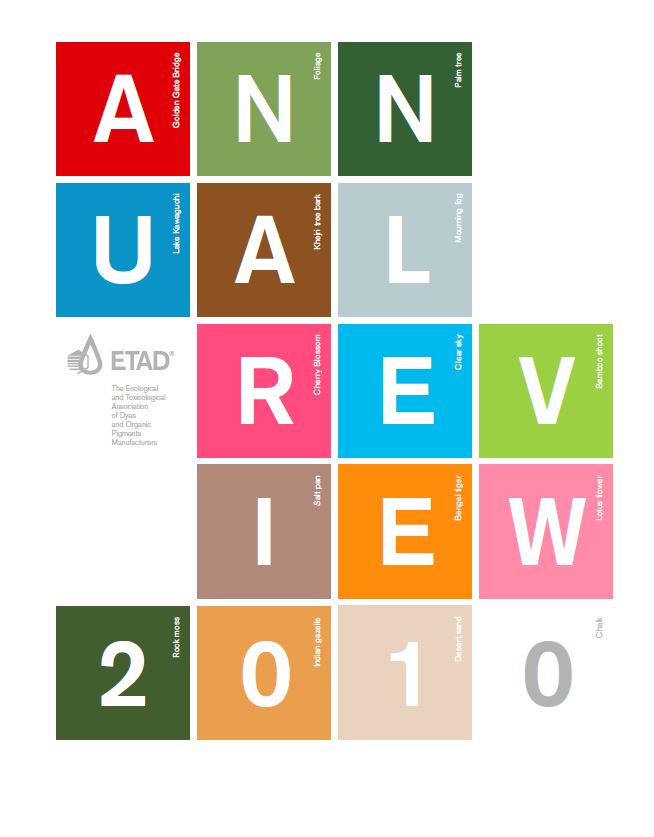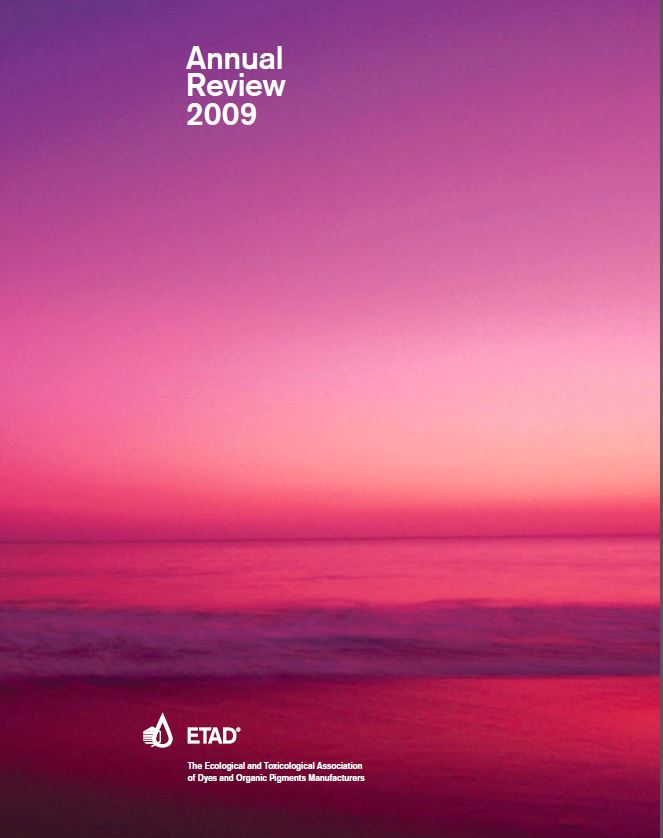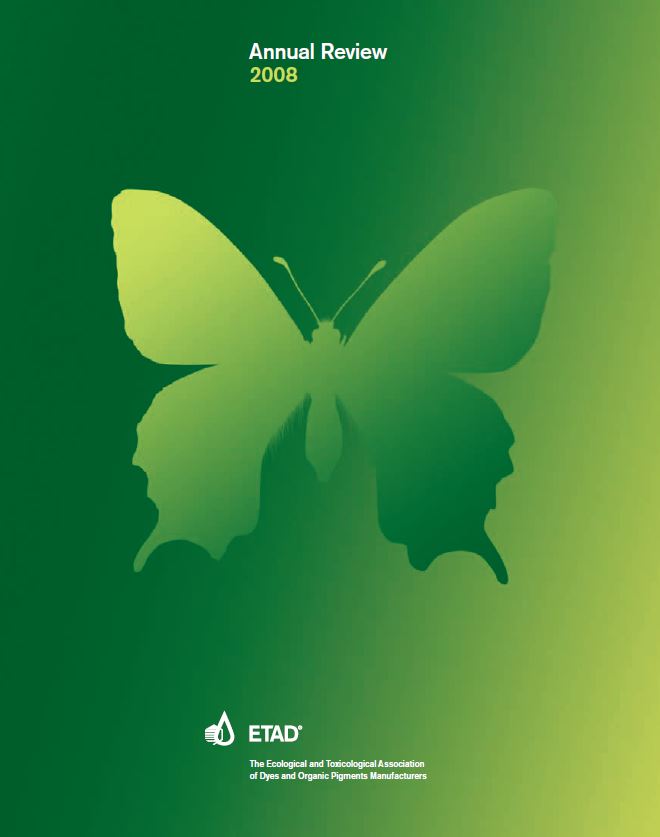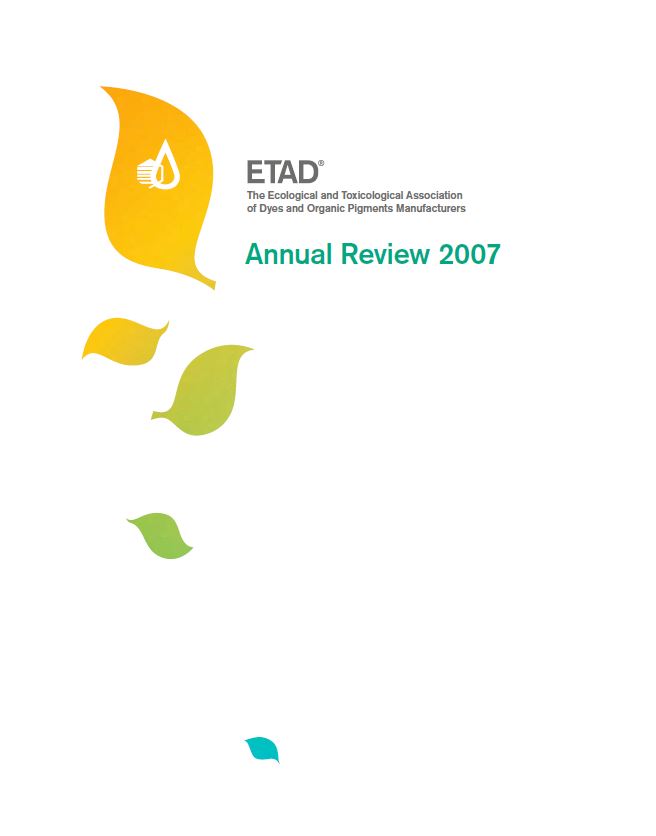Publications
Read our latest publications and position papers
Annual Reports
Position and comments
Information notices
ETAD methods
Since its foundation, ETAD has accompanied its activity of monitoring ecological and toxicological issues on colorants with the development of corresponding methods for the determination of substances and properties of concern.
Thanks to the expertise of ETAD’s member companies, it has been possible to develop methods which suit the specific chemicophysical properties of dyes and organic pigments and allow a correct assessment of their impact on health and the environment.
Below is the full list of ETAD Methods. Kindly be informed that non-ETAD members can purchase access to these methods by contacting us directly via info@etad.com.
For additional inquiries, please do not hesitate to reach out to us.
ETAD Toxicological Methods
| No. 001* | Determination of the acute oral toxicity (LD50). |
| No. 002* | Examination for primary skin irritant action. |
| No. 003* | Examination of irritant action on the eye. |
| No. 004 | Protocol for Salmonella / microsome test (Ames test). |
| No. 005, 1980 | Revised method for Salmonella / microsome test (Ames test). |
| No. 006 | Determination of acute inhalation toxicity of dusts, 1980. |
*now superseded by OECD methods.
ETAD Analytical Methods (PCBs)
| A 4003-214-3/1979 | Determination of polychlorobiphenyls (PCBs) in copper phthalocyanine, 1979. |
| A 4003-218-1/1986 | Determination of polychlorobiphenyls (PCBs) in copper phthalocyanine using reduction to biphenyl, 1986. |
A 4003-219-9/1979
| Determination of polychlorobiphenyls (PCBs) typically present in trace amounts in 3,3′-dichlorobenzidine-based pigments, 1979. |
| A 4003-222-8/1981 | Determination of decachlorobiphenyl in fully chlorinated phthalocyanines, 1981. |
| A 4003-223-7/1985 | Determination of monochlorobiphenyls in copper phthalocyanine, 1985. |
| A 4003-224-9/1986 | Determination of polychlorinated biphenyls (PCBs) by perchlorination, 1986. |
| A 4003-3/1989 | Guidelines for the determination of inadvertent polychlorinated biphenyls (PCBs) in colorants, 1989. |
| A 4003-226-12/1987 | Determination of the maximum possible level of polychlorobiphenyls (PCBs) and polychloroterphenyls (PCTs) in colorants by perchlorination, 1987. |
| No 229 NEW | Determination of total content of polychlorinated biphenyls in pigments by dissolution, cleanup and GC/MS, 2011. |
| M 1/8-1/1987 | Isolation of chlorinated biphenyls from colorants insoluble in water and in organic solvents via Soxhlet extraction, 1987. |
| M 1/9-1/1987 | Isolation of lipophilic impurities (e.g., PCBs) from colorants via liquid/liquid extraction, 1987. |
| M 1/10-1/1987 | Isolation and clean-up of polychlorinated biphenyls (PCBs) from colorants via column chromatography, 1987. |
| M 3/9-8/1990 | Determination of PCBs in colorants by combined GC-MS detection, 1990. |
| M 3/10-8/1990 | Experience with Sistovaris and Donges’ Method for determination of adventitious PCBs and PCTs in colorants. Report by Analytical Subcommittee, 1990. |
ETAD Ecological Methods
| No. 101 | A simple method of determining the biodegradability of products and contaminants in waste water. Static method (R. Zahn and A. Wellens), 1975. |
| No. 102 | Continuous activated sludge test. Modified OECD-confirmatory test for the determination of biological elimination. (Also known under the recent designation of OECD dynamic simulation test), 1975. |
| No. 103 | A screening test for the assessment of the possible inhibitory effect of a chemical substance on aerobic wastewater bacteria, 1979. |
| No. 104 | Method of evaluation of inhibition of microbial respiratory activity of the microorganisms of activated sludges and the microorganisms of rivers, 1979. |
| No. 105 | A screening test for assessing the primary anaerobic biodegradability of water-soluble dyestuffs, 1982. |
ETAD Analytical Methods (general)
| No. 201 | Method for the determination of α- and β-naphthylamine in C. I. Solvent Brown 1/2,1975. |
| No. 202 | Method for the determination of α- and β-naphthylamine in C. I. Acid Black 7. This method is suitable for water-soluble dyestuffs, 1976. |
| No. 203 | Determination of C. I. Disperse Blue 295 in mirror carp (Cyprinus carpio L.), 1976. |
| No. 204 | The accumulation of C. I. Acid Yellow 222 in the bodies of various types of fish, 1976. |
| No. 205 | Determination of disperse dyes in fish, 1976. |
| No. 206 | Determination of C. I. Basic Yellow 49 in fish, 1976. |
| No. 207 | Determination of the accumulation of C. I. Reactive Red 158 in the bodies of golden orfe, 1976. |
| No. 208 | Determination of the accumulation of C. I. Reactive Blue 121 in fish, 1976. |
| No. 209 | Determination of Direct Black ANBN in the presence of whole fish (goldfish and carp), 1976. |
| No. 210 | The determination of reactive dyes in dilute aqueous solution. Range: 0.1 to 1 ppm, 1976. |
| No. 211 | Accumulation of dye in fish; methods of determination for chromium, nickel and cobalt complex dyestuffs, 1976. |
| No. 212 | Proposed method for the determination of unsulphonated primary aromatic amines in pigments and in solvent-soluble dyestuffs intended for use in food packaging materials, 1979. |
| No. 212 revised | Identification and Quantification of Primary Aromatic Amines in Organic Pigments by HPLC. Edition May 3rd, 2016 The updated version allows a more precise quantification of residual PAAs. |
| No. 213 | Determination of reactive and acid dyes in fish (carp), 1979. |
| No. 215 | Determination of 4-aminobiphenyl in C. I. Solvent Black 5, 1979. |
| No. 216 | Determination of C. I. Acid Green 108 in fish flesh (carp) using high performance liquid chromatography, 1980. |
| No. 217 | Determination of 4-aminobiphenyl and benzidine in C. I. Solvent Black 5 (Nigrosines and Indulines), 1979. |
| No. 221 | Quantification of the limits of “no visible migration” of synthetic organic pigments under conditions of testing using the contact paper method,1980. |
| No. 225 | Determination of Cr(VI) traces in water-soluble Cr(III)-complex dyes by ion-chromatography, 1987. |
| Supplement to No. 225 | An analytical procedure to determine the level of extractable chromium in solvent soluble chromium(III) complex dyestuffs, 1987. |
| No. 227 | Monitoring of dyestuffs in drinking water, 1990. |
| No. 228 | Measurement of inspirable dyestuff dusts in the dyehouse atmosphere, 1991. |






